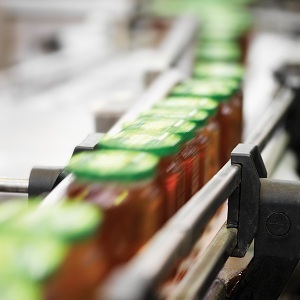

|
Edward Lowton
Editor |


|
ARTICLE
Meeting ISO 8573-1:2010 improves energy saving, productivity and profitability
25 January 2013
In 1991, the International Standards Organisation (ISO) introduced ISO 8573-1, a compressed air quality standard using purity classifications that permit the compressed air user to define the maximum allowable amount of contamination per cubic metre of compressed air.

In 1991, the International Standards Organisation (ISO) introduced ISO 8573-1, a compressed air quality standard using purity classifications that permit the compressed air user to define the maximum allowable amount of contamination per cubic metre of compressed air.
Comprising of nine parts, ISO 8573 series not only provides air quality classifications for the main contaminants, but also the equipment and methods required to carry out accurate testing.
Now that ISO 8573-1:2010 is at its third revision, industry is becoming increasingly aware of the changes implicit in this current air quality standard. Although not law, this ISO standard forms the basis for best practice and the source of regulations that ensure companies can remain an internationally acceptable part of the global trading world.
The good news for manufacturers is that the new standard can be met through a carefully managed compressed air audit and, where appropriate, revision of existing factory equipment.
Indeed, companies can achieve the degree of air purity (quality) specified by ISO 8573-1:2010 and ensure compliance by improving system design and operation, as well as by adopting a careful approach to the maintenance and monitoring of filtration and drying systems. The use of intelligent energy and quality monitoring devices, to maximise the efficiency of existing processes will also assist.
Comprising of nine parts, ISO 8573 series not only provides air quality classifications for the main contaminants, but also the equipment and methods required to carry out accurate testing.
Now that ISO 8573-1:2010 is at its third revision, industry is becoming increasingly aware of the changes implicit in this current air quality standard. Although not law, this ISO standard forms the basis for best practice and the source of regulations that ensure companies can remain an internationally acceptable part of the global trading world.
The good news for manufacturers is that the new standard can be met through a carefully managed compressed air audit and, where appropriate, revision of existing factory equipment.
Indeed, companies can achieve the degree of air purity (quality) specified by ISO 8573-1:2010 and ensure compliance by improving system design and operation, as well as by adopting a careful approach to the maintenance and monitoring of filtration and drying systems. The use of intelligent energy and quality monitoring devices, to maximise the efficiency of existing processes will also assist.
Related articles
MORE FROM THIS COMPANY
- Breath of fresh air
- Compressed air for point of use
- Maximise productivity and cost benefits with on-site nitrogen generation
- High quality compressed air is vital to manufacturing excellence
- Stamp of approval for Parker Medical Grade Breathing Air Purifiers
- Aerosol challenge test instrument
- Parker debuts V16 bent-axis motor series
- If you compromise on filter element technology do you run the risk of threatening your facilities efficiency and productivity?
- Energy saving compressed air filters
- Why compromise air quality for the cost of a filter element?
RELATED ARTICLES
- No related articles listed
OTHER ARTICLES IN THIS SECTION

















